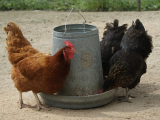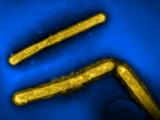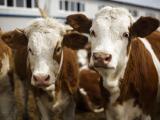Apr 12, 2013 (CIDRAP News) – New reports of H7N9 avian flu infections in China today boosted the total to 43, with 5 more cases: 2 from Shanghai and 3 from neighboring Zhejiang province.
One more death was reported, that of a 74-year-old man from Shanghai whose illness was first announced during the first week of April. The new fatal case pushed China's number of deaths from the novel virus to 11.
The illness-onset dates for the newest cases are very recent, a clear signal that the H7N9 outbreak is ongoing. Those dates range from Apr 3 through Apr 8. No details about the patients' conditions were included in official statements or news reports.
The World Health Organization (WHO) included all of the new cases and the death in an update today. The patients are all older than 50. Those from Zhejiang include a 66-year-old man, a 74-year-old man, and a 54-year-old woman. Shanghai case-patients are two men, ages 53 and 86.
The fatal case is in a man whose H7N9 infection was confirmed on Apr 6, according to a report from Xinhua, China's state news agency. He died last night.
Chinese medical officials are closely monitoring more than 1,000 close contacts of confirmed H7N9 cases, the WHO said. So far, no evidence of ongoing human-to-human transmission has been found.
The European Centre for Disease Prevention and Control (ECDC) said in an update today that no links among the cases have been found. It said it expects more sporadic cases to be reported. The risk to Europe is still considered low, but individual cases coming to the continent from China are a possibility, the ECDC noted.
H7N9 detected in ducks
In other developments, China's National Avian Flu Reference Laboratory said today that the H7N9 virus has been detected in samples of ducks from the city of Huzhou in Zhejiang province, the Global Times, an English-language newspaper based in Beijing, reported.
Two of 10 samples were positive. The findings prompted the culling of 7,000 birds in one of the city's major trading markets, and sales at 15 other live-bird markets have been suspended.
Zhejiang province is the third area to find H7N9 in birds. Testing has detected the virus in birds in Shanghai and in Jiangsu province. Also, the latest findings mark the first detection in ducks: Earlier tests have confirmed the virus in only a small number of chickens and pigeons.
Health officials still haven't determined the reservoir for the virus and how humans are getting sick. Some of the infected patients had contact with poultry or their environments, but some did not.
CDC says limited human-to-human spread likely
The US Centers for Disease Control and Prevention (CDC) today posted an update on its preparedness efforts and on China's H7N9 case count.
The agency said it received the first virus isolate from China yesterday, which will help it develop and test a candidate vaccine, evaluate and adjust a diagnostic test kit, develop a serologic assay to test for antibodies to the virus, grow the virus and share it, with proper precautions, with WHO network labs, and test H7N9's susceptibility against antiviral drugs.
Chinese officials are continuing to investigate close contacts of infected patients to see if human-to-human spread is occurring, the CDC said. So far global health officials have seen no sign of sustained human-to-human transmission, an event that would heighten the pandemic risk.
The CDC said it's likely that some limited human-to-human spread will be detected, as has been the case with other viruses, most notably H5N1. For example, it noted that when the H5N1 virus first emerged in China in 1997, officials found limited transmission from sick patients in Hong Kong to healthcare workers and household contacts.
Flu experts are monitoring the virus to see if it changes or adapts to allow more efficient transmission to mammals or reassorts with human influenza viruses during co-infections to form a more transmissible strain that spreads easily from person to person, the CDC said. "The investigation is ongoing and CDC will provide more information as it becomes available," the agency said.
See also:
Apr 12 WHO update
Apr 12 ECDC update
Apr 12 Global Times story
Apr 12 CDC H7N9 update


















